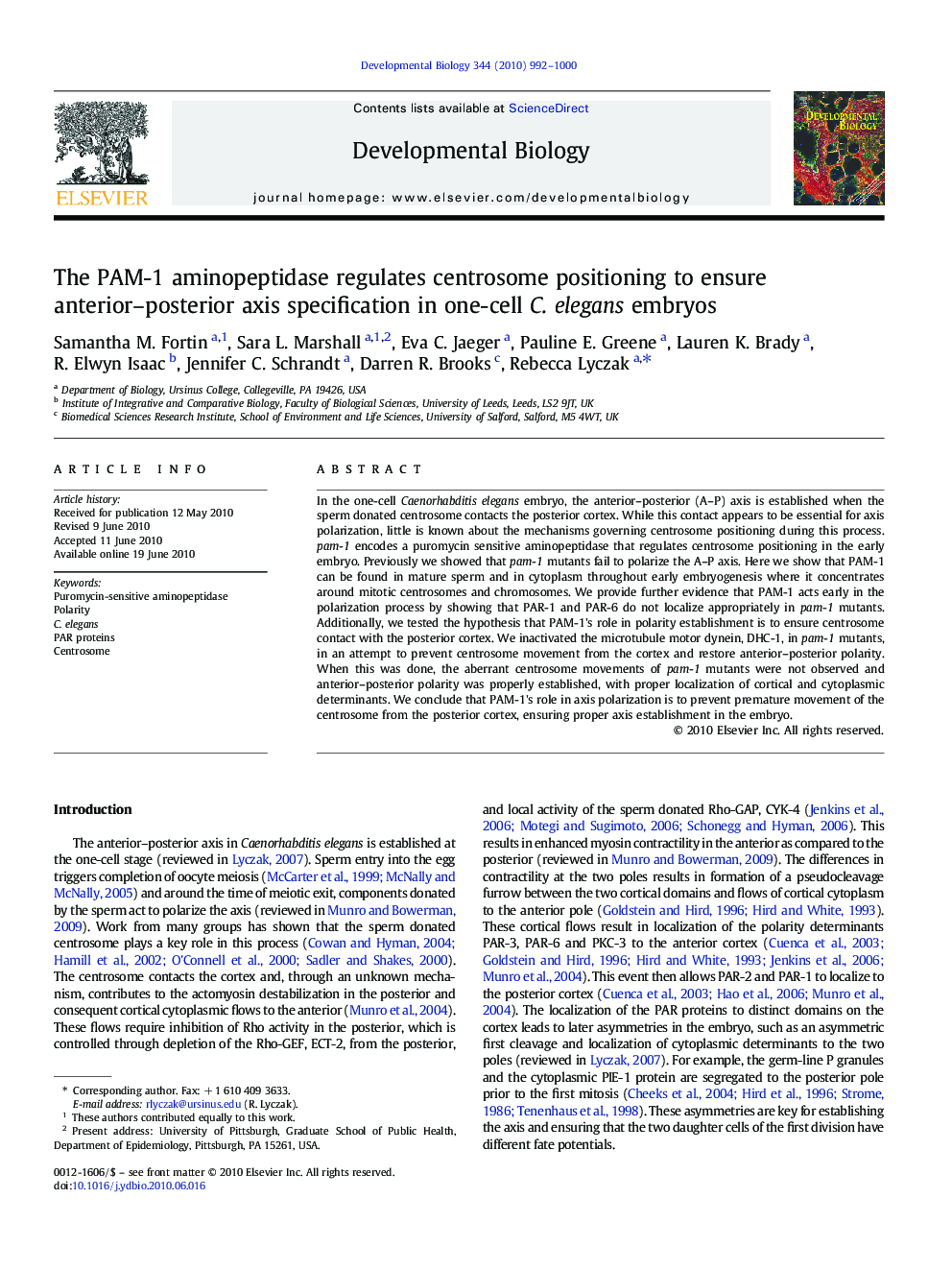| Article ID | Journal | Published Year | Pages | File Type |
|---|---|---|---|---|
| 2173880 | Developmental Biology | 2010 | 9 Pages |
In the one-cell Caenorhabditis elegans embryo, the anterior–posterior (A–P) axis is established when the sperm donated centrosome contacts the posterior cortex. While this contact appears to be essential for axis polarization, little is known about the mechanisms governing centrosome positioning during this process. pam-1 encodes a puromycin sensitive aminopeptidase that regulates centrosome positioning in the early embryo. Previously we showed that pam-1 mutants fail to polarize the A–P axis. Here we show that PAM-1 can be found in mature sperm and in cytoplasm throughout early embryogenesis where it concentrates around mitotic centrosomes and chromosomes. We provide further evidence that PAM-1 acts early in the polarization process by showing that PAR-1 and PAR-6 do not localize appropriately in pam-1 mutants. Additionally, we tested the hypothesis that PAM-1's role in polarity establishment is to ensure centrosome contact with the posterior cortex. We inactivated the microtubule motor dynein, DHC-1, in pam-1 mutants, in an attempt to prevent centrosome movement from the cortex and restore anterior–posterior polarity. When this was done, the aberrant centrosome movements of pam-1 mutants were not observed and anterior–posterior polarity was properly established, with proper localization of cortical and cytoplasmic determinants. We conclude that PAM-1's role in axis polarization is to prevent premature movement of the centrosome from the posterior cortex, ensuring proper axis establishment in the embryo.
